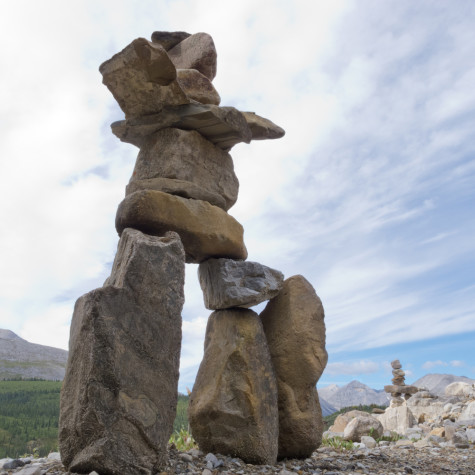 On a journey into the Kenai Mountains of South Central Alaska between snow-swollen peaks and cornices curling above glaciers, we carried a satellite phone. I usually don’t take any form of outside communication into the wilderness, so this device was nagging on me.
On a journey into the Kenai Mountains of South Central Alaska between snow-swollen peaks and cornices curling above glaciers, we carried a satellite phone. I usually don’t take any form of outside communication into the wilderness, so this device was nagging on me.
For whatever reason I was fine with headlamps and ropes, various pieces of technology, but the phone felt like an intrusion. Ostensibly, it was for emergencies. John, one of the trip members, had a mother who’d been in a deteriorating state of dementia and was on the edge of death when he left for this trip. John said that her dementia had been in place for years and that he’d lost his mother long ago, but he needed to stay in touch.
I wondered what the analog of a satellite phone could possibly have been before we ever had technology like this, the last hollers though a mountain pass, a stack of rocks left for someone else to find hundreds or thousands of years later. What has the satellite phone done but lengthen our goodbyes?
In rugged and sparsely populated terrain like this, ancient communication would have been far from what we rely on now. The inuksuk is an Arctic rock stack often made into the shape of a giant person with arms outspread.  Made traditionally by Inuits, and rarely dating to older than 4,000 years ago, these were aids for hunting and navigation. They served as coordination points and message centers indicating nearby caches. Sometimes it is a single upright stone planted in the permafrost like a dolmen, and sometimes it is stacked into a cairn visible from miles away on the tundra. Inuk means “human built.” The suffix suk means “to act in the capacity of.” They not only stood, and still stand, as lone markers on hilltops and along riverbanks, but they have also been found gathered around each other like a convocation, their placement relaying messages and stories to those who can still decipher them.
Made traditionally by Inuits, and rarely dating to older than 4,000 years ago, these were aids for hunting and navigation. They served as coordination points and message centers indicating nearby caches. Sometimes it is a single upright stone planted in the permafrost like a dolmen, and sometimes it is stacked into a cairn visible from miles away on the tundra. Inuk means “human built.” The suffix suk means “to act in the capacity of.” They not only stood, and still stand, as lone markers on hilltops and along riverbanks, but they have also been found gathered around each other like a convocation, their placement relaying messages and stories to those who can still decipher them.
Older messages than the inuksuit (plural) are beginning to be deciphered from the caves of France and Spain where among elegant animal depictions, Paleolithic people left widely repeated symbols. Taken as a whole, figurative imagery in the caves — the well known renderings of lions, bears, horses, rhinos and mammoths — are dwarfed in number by geometric shapes and symbols that have been documented and compared between 52 French, Spanish, Portuguese and Italian caves dating to the late Pleistocene.
Genevieve von Petzinger and April Nowell, of the University of Victoria, in British Columbia, have assembled a database of symbols from 200 decorated caves and rock shelters, finding what von Petzinger calls “definite patterning in the way these signs were used.”
This may have been one of the earliest forms of writing, a way of broadcasting messages farther in space and time than any voice ever could.
I was tempted to stretch the definition of an inuksuk or Paleolithic cave symbols to a satellite phone, but I wasn’t ready. I still didn’t like it.
One morning in this theater of mountains, I heard the odd beeping of codes and phone numbers, and then John’s murmurs. I tried to blank out the sounds, keeping myself in a Pleistocene bubble but I couldn’t help imagining lips moving on the other end of a call thousands of miles away.
That night after dinner we sat at the edge of our horseshoe shaped trench, the kitchen jumbled in the middle between us. Snow was shoveled up behind our backs to block the wind and give us something to lean against. John and David drank Cragganmore whiskey in metal cups with small clods of snow tossed in, the drink of mountaineers they said. The rest of us drank tequila, neat.
John said, “My mother died last night.”
No one spoke. We held our cups a little more closely. He made it clear that continuing this journey would honor her more than returning for some melancholy death vigil. He said his mother would appreciate this.
From the trench, John gave a stirring eulogy and the satellite phone became a necessary part of our lives, something that changed the way we related to each other. Having many days ahead of us in a land of crevasses and white outs, we tightened around each other.
Humans are tool users, that is our skill as a species. Not getting lost in sentimentality, we find the sharpest stones, we make fires, we reach to space and call home.
As John reminisced, the scale of our own lives seemed to shrink. His mother was born in 1916. A life that went from the reign of a Russian Tsar to satellite phones had snuffed out last night. What a flash of shadow we are, here barely long enough to catch a breath.
“Here’s to my mom, who lived a long and full life, full of love and adventure,” John said as he lifted his cup. The rest of ours followed.
“Rest in peace, Dorothy,” he said.
(Images: Shutterstock)
Beautiful.
I needed this today. Thank you, Craig.